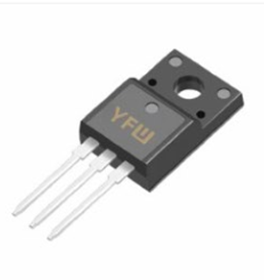Date:2025-05-13 Categories:Product knowledge Hits:430 From:Guangdong Youfeng Microelectronics Co., Ltd
Forward Biasing: When a positive voltage is applied to the P-side (anode) and a negative voltage to the N-side (cathode) of the diode, Rectifier diodes, it is forward-biased. The applied voltage opposes the potential barrier in the depletion region. As the forward voltage exceeds the barrier voltage (approximately 0.7 V for silicon diodes and 0.3 V for germanium diodes), the depletion region narrows significantly. This allows majority carriers to flow across the junction, creating a substantial current. In forward bias, the diode acts as a closed switch, with a relatively low resistance, enabling current to pass through easily.
Reverse Biasing: In contrast, when the polarity of the applied voltage is reversed (negative on the anode and positive on the cathode), Rectifier diodes, the diode is reverse-biased. The applied voltage now increases the width of the depletion region, strengthening the potential barrier. Only a tiny reverse leakage current, primarily due to the movement of minority carriers (electrons in the P-side and holes in the N-side), flows through the diode. This current is typically in the microampere range for silicon diodes and is negligible in most applications. The diode effectively acts as an open switch under reverse bias, blocking current flow.
Rectification Process
Rectifier diodes are pivotal in converting AC, which periodically changes direction, into DC, which flows in a single direction. Two common rectification circuits are the half-wave rectifier and the full-wave rectifier. Rectifier diodes
Half-Wave Rectifier
In a half-wave rectifier circuit, a single diode is connected in series with a load resistor. Rectifier diodes. During the positive half-cycle of the AC input, the diode is forward-biased, allowing current to flow through the load, creating a positive voltage across it. However, during the negative half-cycle, the diode is reverse-biased, blocking current flow. As a result, only the positive half-cycles of the AC waveform are passed to the load, producing a pulsating DC output. While simple, half-wave rectifiers are inefficient as they utilize only half of the AC input waveform.

Previous: Classification, Structure, and Principle of MOSFET
Next: Full-Wave Rectifier